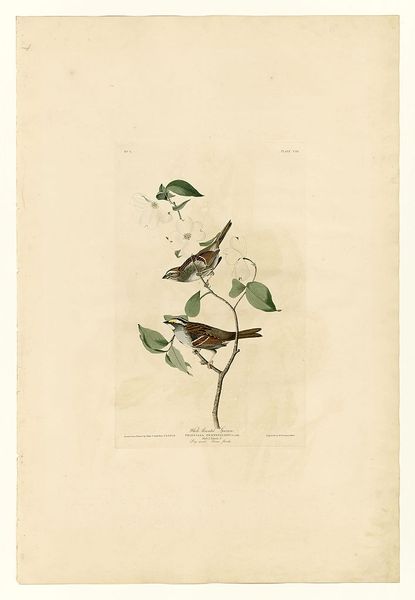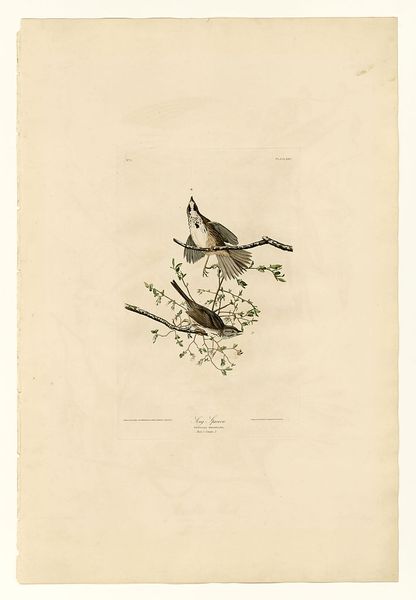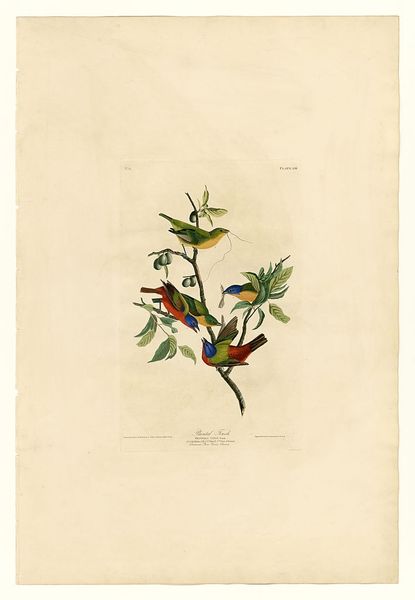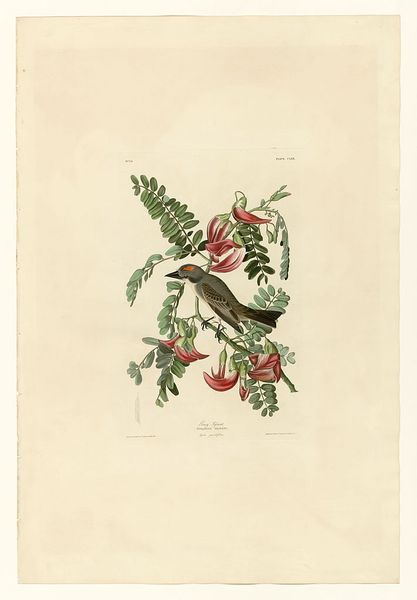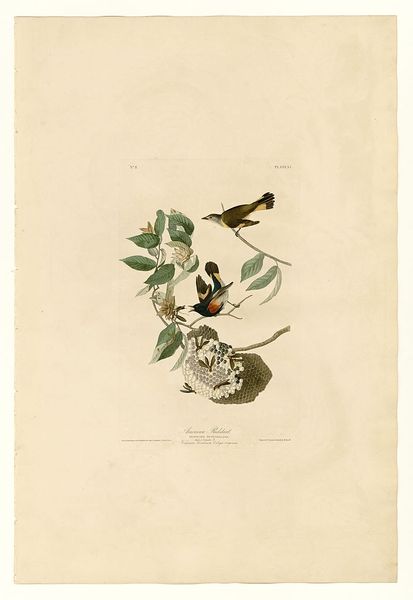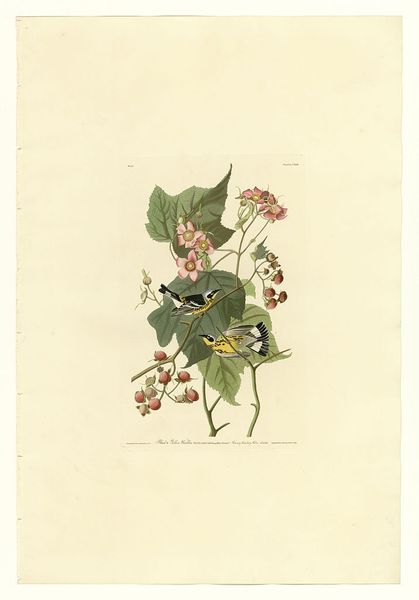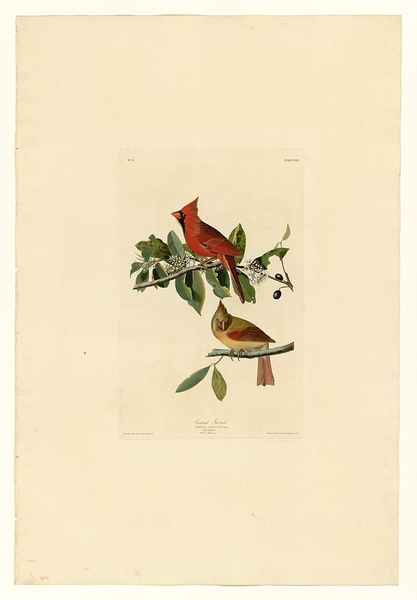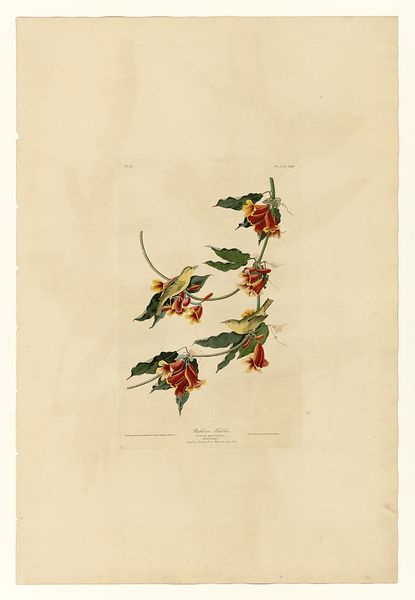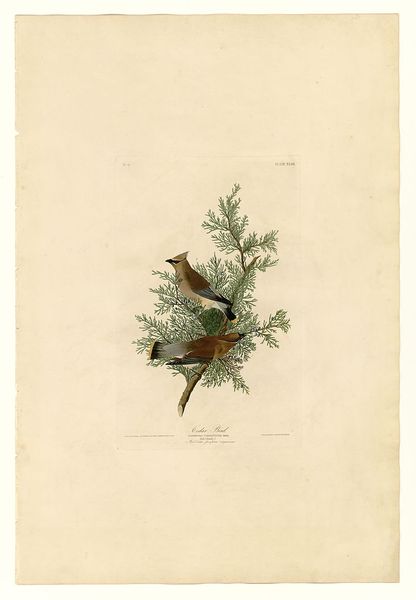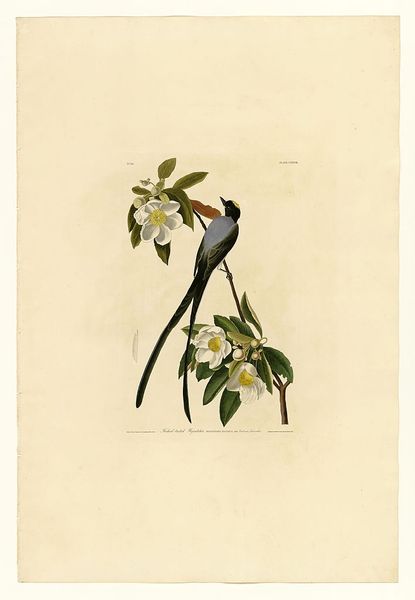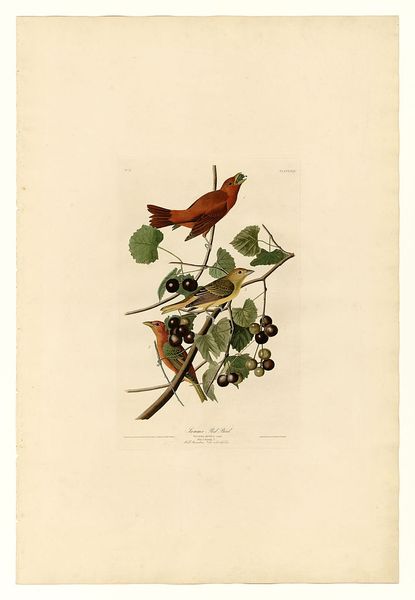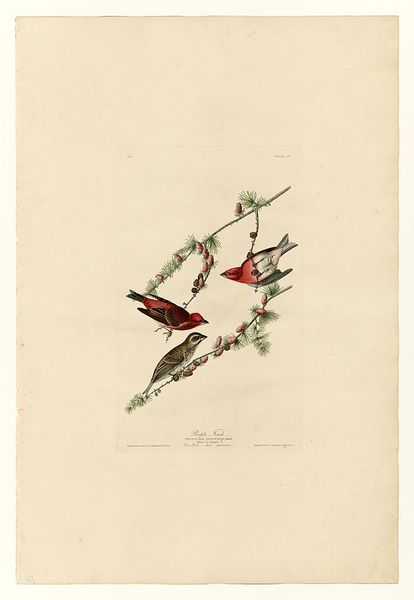
drawing, watercolor
#
portrait
#
drawing
#
landscape
#
watercolor
#
romanticism
#
sketchbook drawing
#
watercolour illustration
#
botany
#
nature
#
realism
Copyright: Public domain
John James Audubon made this print of a wood thrush using etching, engraving, and aquatint, all printmaking techniques that allow for highly detailed images. The making of this piece involves both meticulous observation of nature, and the skilled labor of the printmaker. The aquatint gives a watercolor effect to the image; this is achieved by applying powdered resin to a metal plate and then heating it, creating a porous surface that holds ink. The etching and engraving techniques further define the fine lines of the birds' feathers and the surrounding foliage. The naturalism of Audubon’s prints was groundbreaking for its time, but what is easy to miss is that this was also, in its way, a kind of industrial production. These prints were part of a larger project that involved numerous skilled artisans, reflecting a complex web of labor and commerce. By looking closely at the materials and processes used, we can appreciate the intersection of art, craft, and the natural world, as well as the commercial networks of the early 19th century.
Comments
No comments
Be the first to comment and join the conversation on the ultimate creative platform.
